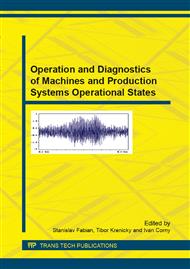p.105
p.111
p.115
p.121
p.127
p.133
p.141
p.147
p.153
Conformal Cooling of the Injection Moulds
Abstract:
Paper deals with the diagnosis of operating conditions for injection moulding tools. Paper specifically deals with the conformal cooling of injection moulds for its production is using the direct metal laser sintering method. It´s quite modern method about injection mould cooling system design to improve cooling intensity. Paper also deals with the evaluation of the temperature fields in the area of the mould shape parts in comparison with the common cooling system with drilled channels namely at using steel or copper alloys for punch production. Moreover there is also evaluated cooling method influence on properties and also injection part morphological structure by methods of wide angle X-ray scattering and differential scanning calorimetry.
Info:
Periodical:
Pages:
127-132
Citation:
Online since:
February 2013
Authors:
Price:
Сopyright:
© 2013 Trans Tech Publications Ltd. All Rights Reserved
Share:
Citation:


